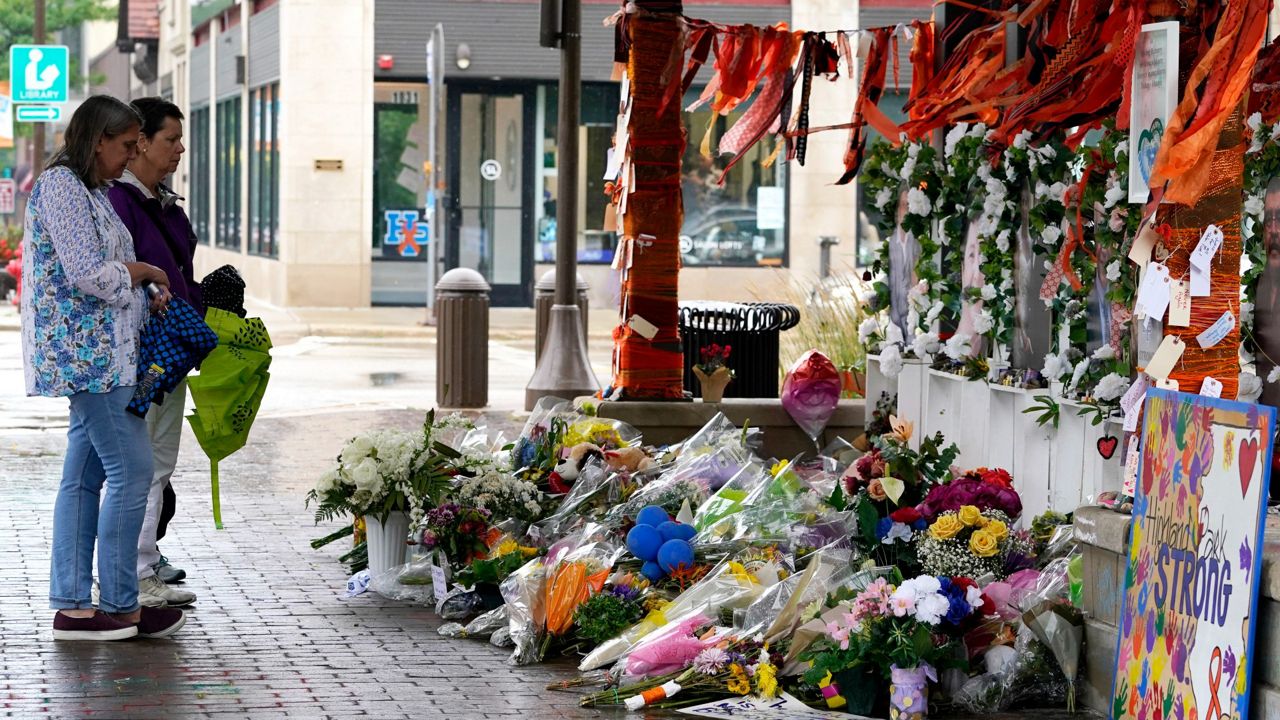The cost of gun violence extends well beyond injuries and the loss of life, financially crippling victims and their families, taking a bite out of government and school budgets, hurting economies and doing lasting damage to children’s education, according to a trio of new studies and reports.
What You Need To Know
- The cost of gun violence extends well beyond injuries and the loss of life, financially crippling victims and their families, taking a bite out of government and school budgets, hurting economies and doing lasting damage to children’s education, according to a trio of new studies and reports
- According to research published this week by Everytown for Gun Safety, a group that advocates for gun reform, firearm-related violence costs the United States an estimated $557 billion a year, $12.6 billion of which is paid for by taxpayers
- A separate study published last month by the Government Accountability Office concluded that gun violence costs victims and their families $1 billion annually in direct health care costs
- Congress’ Joint Economic Committee issued a report Wednesday outlining other costs of gun violence, including how school shooting survivors' education is negatively impacted
According to research published this week by Everytown for Gun Safety, a group that advocates for gun reform, firearm-related violence costs the United States an estimated $557 billion a year, $12.6 billion of which is paid for by taxpayers.
The analysis factors in the cost of police investigations, initial medical bills, subsequent costs such as long-term treatment and mental health care, earnings lost to disability or death, legal costs, and estimates for quality of life lost to pain and suffering of victims and their families.
Everytown argues that if shootings were prevented, more money “could be directed toward beneficial and productive investments such as educating the next generation.”
The $557 billion figure amounts to around 2.6% of U.S. gross domestic product and breaks down to an average of $1,698 for every resident in the country.
“At a moment when the United States needs to marshal all its resources to invest in education, worker skills, and building healthier, safer, more sustainable communities, our federal, state, and local governments are spending a combined average of nearly $35 million each day to deal with the aftermath of gun violence across the country,” the group’s report says. “Put simply, America cannot afford gun violence.”
A separate study published last month by the Government Accountability Office concluded that gun violence costs victims and their families $1 billion annually in direct health care costs.
The researchers found that each year firearm-related injuries lead to 30,000 initial inpatient hospital stays — which cost an average of $31,000 each — and 50,000 emergency room visits, costing $1,500 each on average. Those figures, however, are believed to be undercounts because the data did not include physician costs, which could add another 20% to the total, the GAO said.
The study also found that 16% of survivors who initially had inpatient hospital stays were readmitted at least once for their injuries.
Congress’ Joint Economic Committee issued a report Wednesday outlining other costs of gun violence. The report drew on data and studies from various sources, including the Everytown and GAO research.
The panel cited studies that found psychiatric disorders among survivors of gun violence injuries spiked by 200% in the month after their injuries and that antidepressant use among children exposed to fatal school shootings in their communities increased by 21%.
School shootings in Texas were followed by absence rates increasing by 12% and chronic absenteeism rising by 28%, according to a National Bureau of Economic Research study. The rate of grade repetition more than doubled in the two years after a school shooting.
School shooting survivors are 4% less likely to graduate from high school by age 26 and 10% less likely to attend college, the NBER found. Among those who did attend college, they were 15% less likely to receive a bachelor’s degree by 26.
Meanwhile, schools and colleges spent $3.1 billion on security measures in 2021, straining their budgets, the Joint Economic Committee report said. That figure does not include billions spent on the addition of armed law enforcement officers stationed at school campuses.
The panel’s report also said business growth is slowed by gun violence, pointing to a survey of business owners, some of whom said they’ve spent money on protecting their business — including cameras, bulletproof windows and security staff — as well as cut hours by closing earlier in the day, when it’s typically safer to operate. The housing markets in areas that experience high rates of gun violence also are negatively impacted, the committee said.
“It's abundantly clear that the United States is facing a gun violence crisis that is unique in its deadliness and its scale,” Rep. Don Beyer, D-Va., the committee’s chairman, said during a hearing Wednesday. “While mass shootings capture international attention, the use of guns in homicides, suicides and accidental shootings impose widespread and long-lasting costs. Loss or energy to gun violence is immeasurable, but the economy-wide harms are real and calculable.”
While separate Senate and House panels debated the possibility of banning semi-automatic weapons Wednesday, Sen. Mike Lee, the top Republican on the Joint Economic Committee, said he believes further restricting gun access is not the answer, pointing to the Second Amendment. He said research conducted by his staff found that defensive gun use helped avoid more than $120 billion crime last year.
“Addressing our violence epidemic will not be achieved through top-down rules from Washington, but with the much harder work of reversing the decline in social capital in communities across America,” the Utah lawmaker said. “We should look to community-led solutions focused on cultivating stable two-parent families, strengthening employment opportunities, boosting institutional trust, enforcing laws that are already on the books and supporting local programs that help those at highest risk for violence.”



